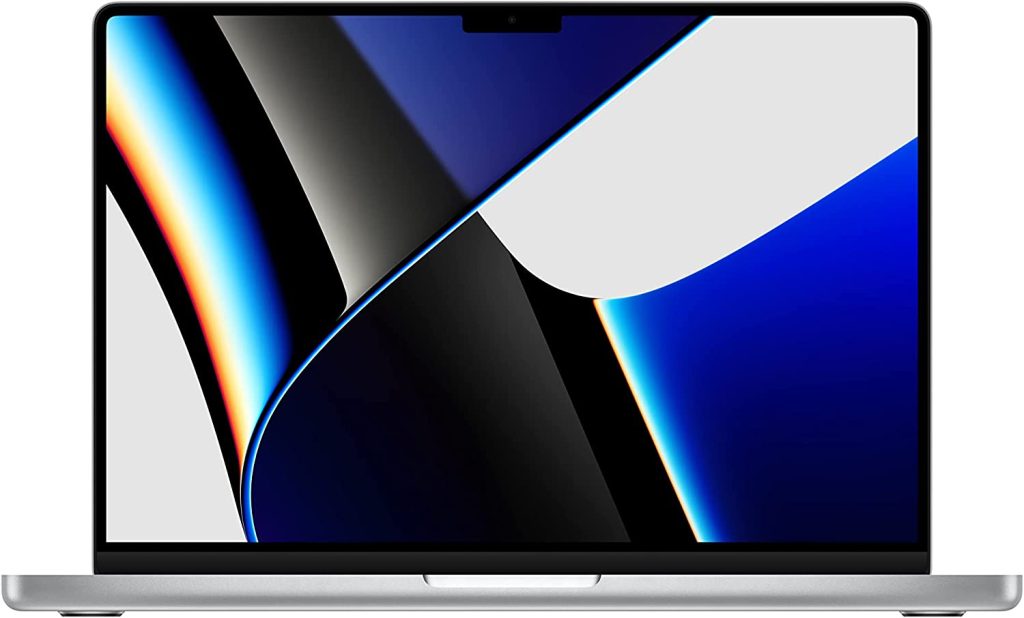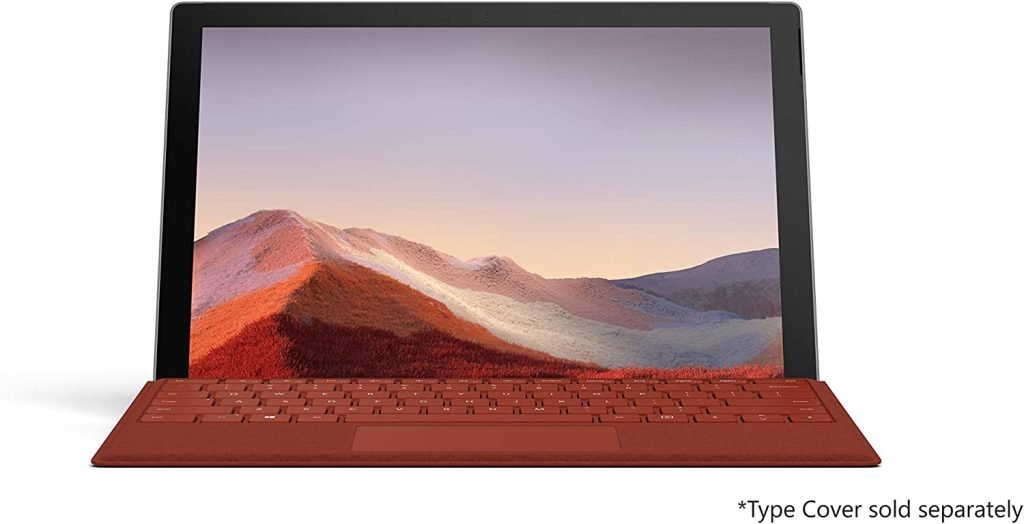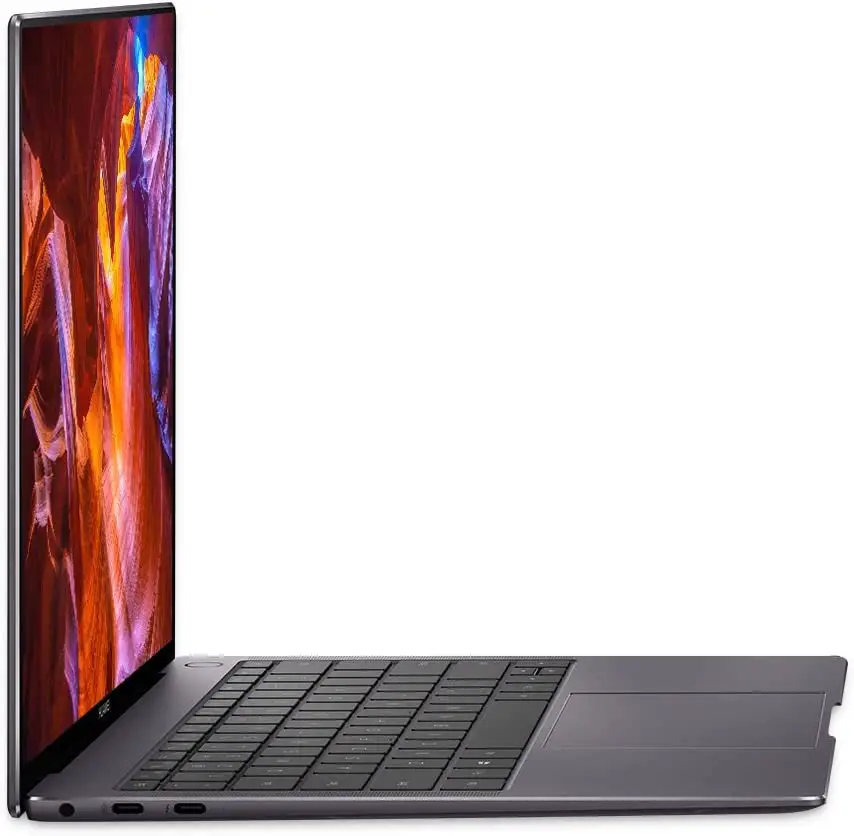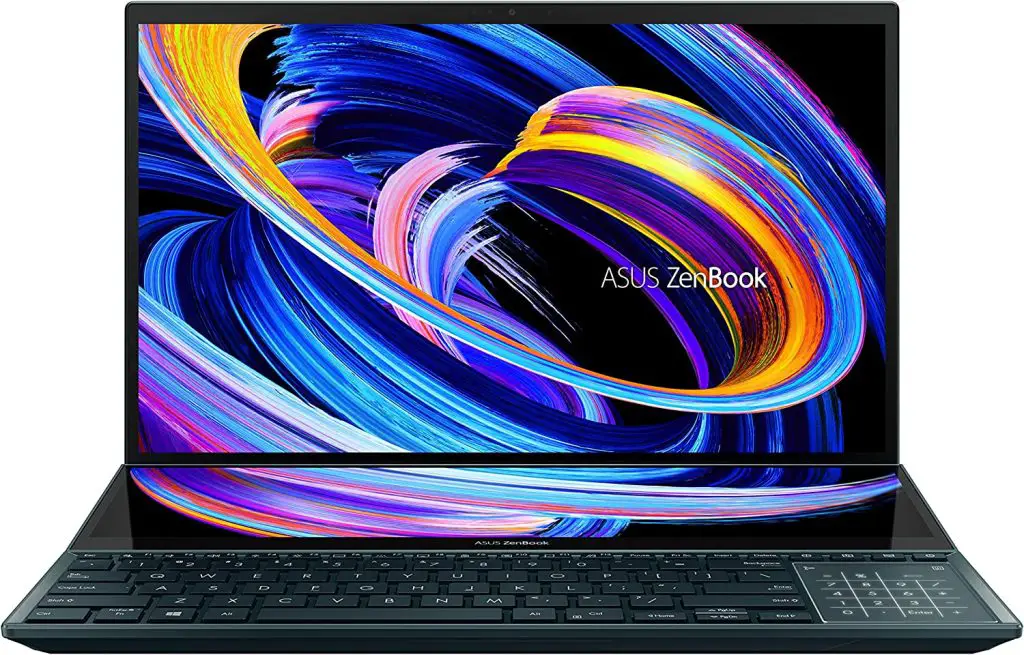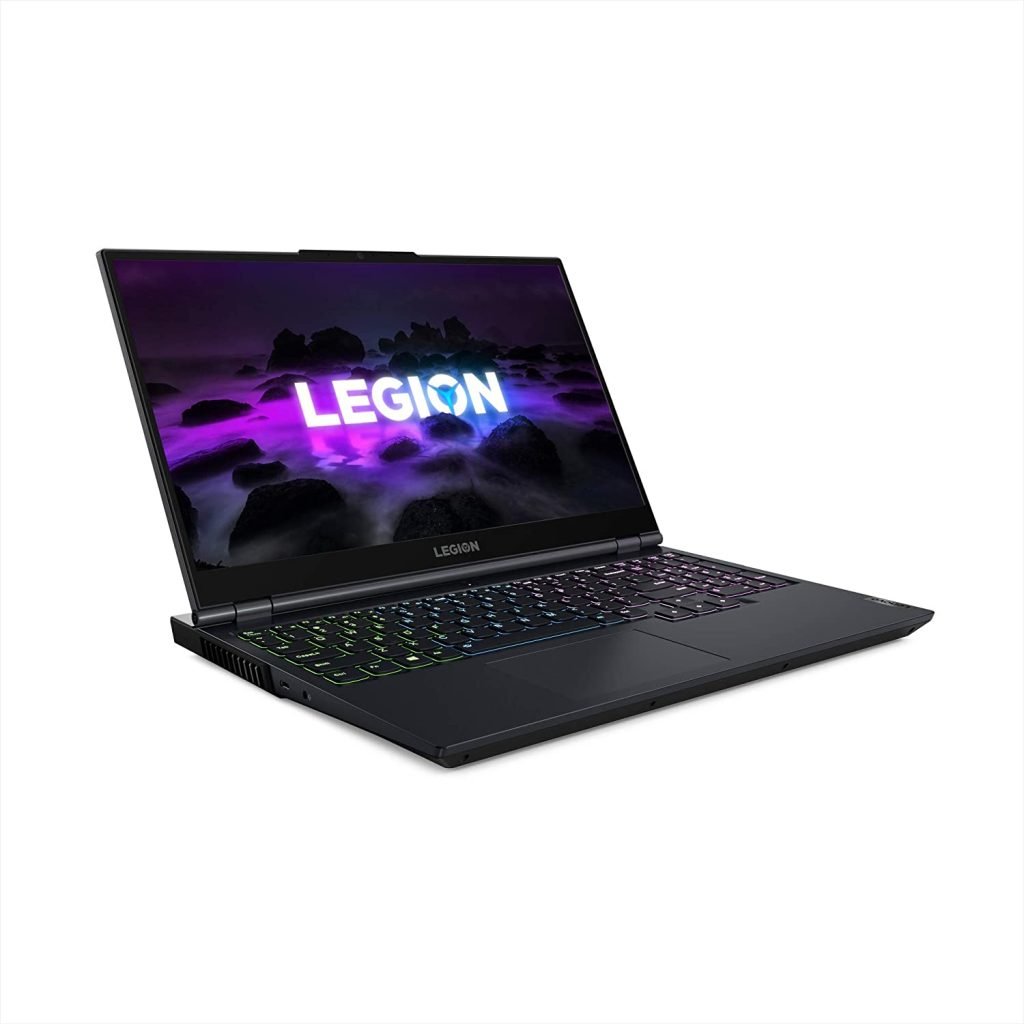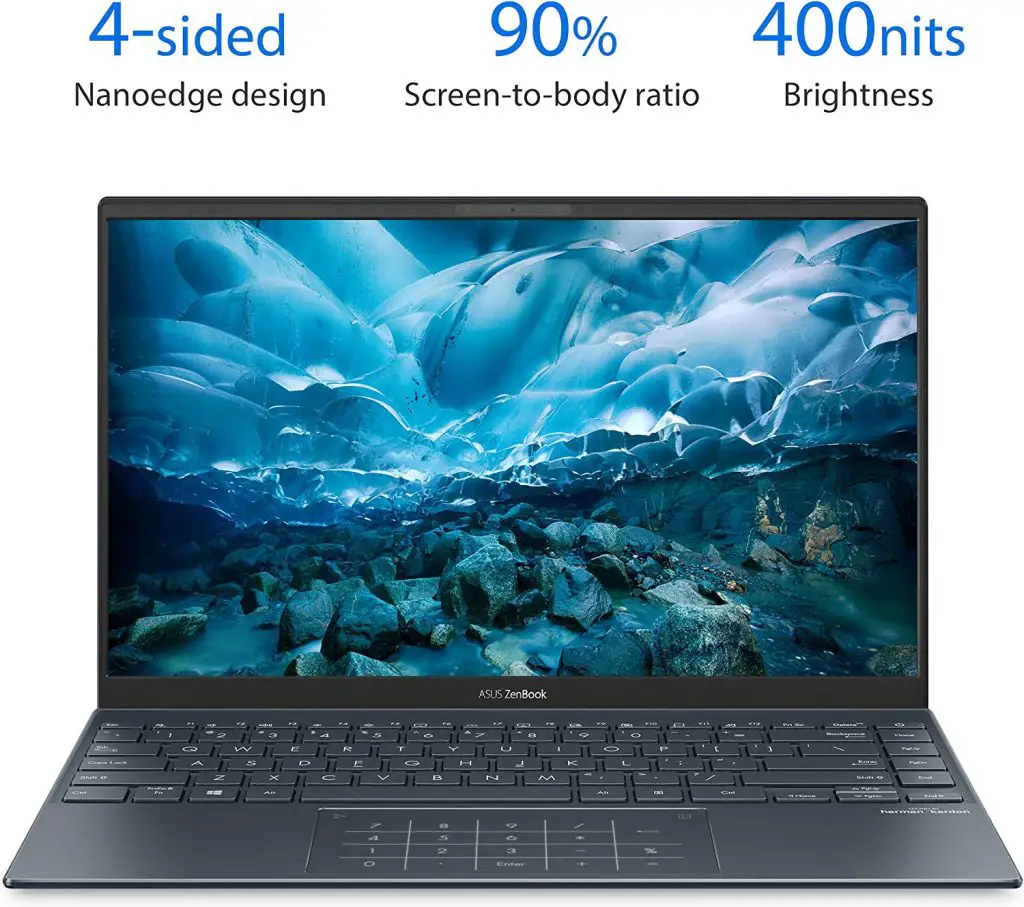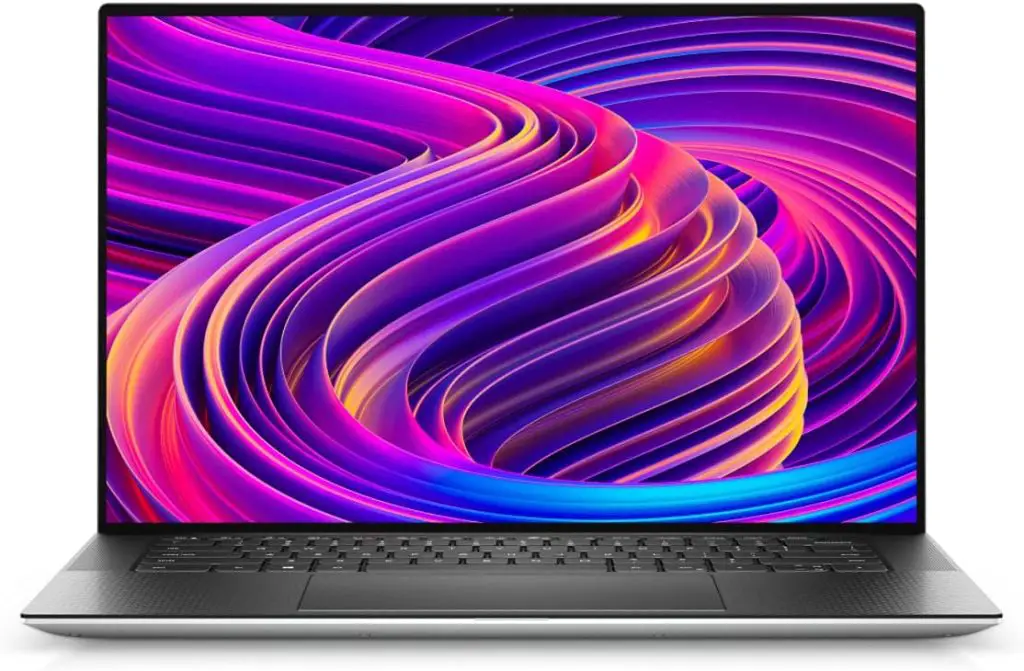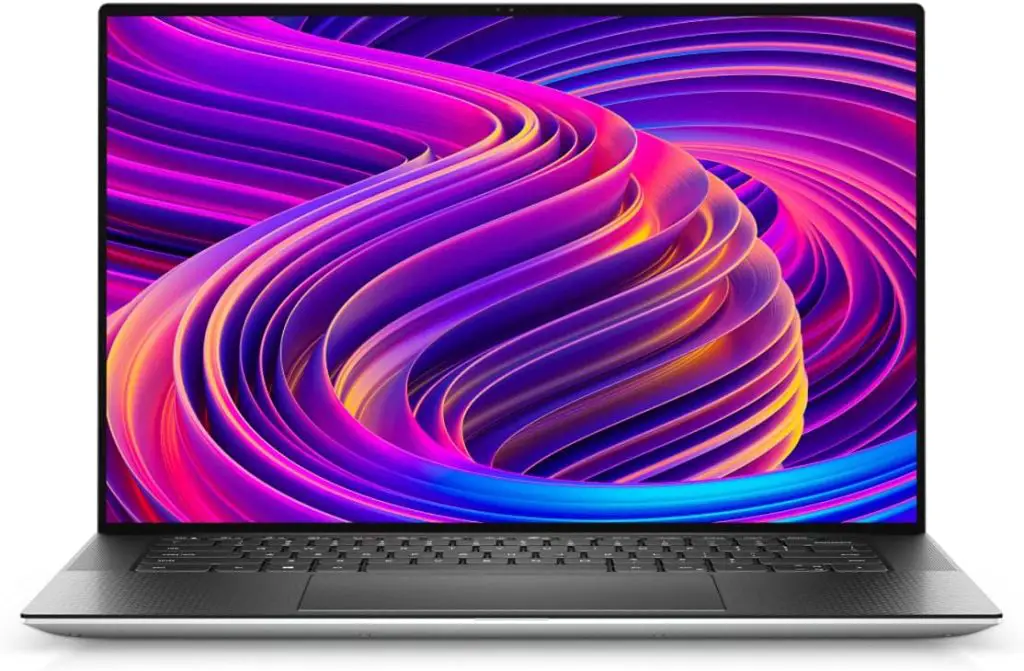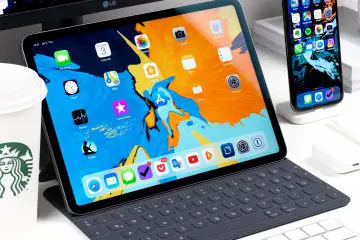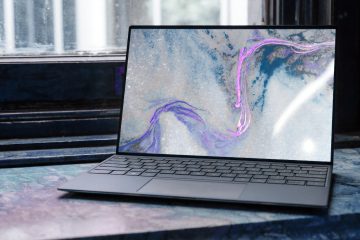Trading has become more digitalized in recent years, with many traders relying on laptops to execute trades and analyze market trends. As such, having a laptop that is reliable, fast, and efficient is essential for any trader. But with so many laptops on the market, it can be challenging to choose the right one that meets your needs.
In this article, we will review some of the best laptops for trading, taking into consideration factors such as processing power, graphics, display, battery life, and connectivity. We will provide you with a detailed analysis of each laptop’s features, pros, and cons, to help you make an informed decision. Whether you are a beginner or a seasoned trader, we have you covered with the top laptops for trading in the market.
Factors to Consider When Choosing a Laptop for Trading
- Processor: A powerful processor is essential for traders who want to run multiple applications and analysis tools simultaneously. Look for a laptop with an Intel Core i5 or i7 processor for optimal performance.
- RAM: Random Access Memory (RAM) is crucial for multitasking and running several trading applications at once. A minimum of 8GB of RAM is recommended, but 16GB or more is ideal.
- Storage: The storage capacity of your laptop is also important. Traders need a laptop with enough storage to store trading software, data, and analysis tools. A solid-state drive (SSD) is recommended for faster boot times and application loading.
- Display: The display is an essential factor to consider when choosing a laptop for trading. A larger display allows for more charts and data to be viewed at once. A Full HD (1920 x 1080) or higher resolution display is recommended, and an IPS panel provides better viewing angles and color reproduction.
- Graphics: While traders don’t necessarily need a dedicated graphics card, a laptop with a dedicated graphics card can handle intensive analysis tools and trading applications with ease.
- Battery Life: Traders who work on the go need a laptop with a long battery life. Look for a laptop that can last for at least 8 hours on a single charge.
- Portability: A laptop that is lightweight and easy to carry is ideal for traders who need to work on the go. Look for a laptop with a weight of 3.5 pounds or less.
- Price: The cost of the laptop is also an essential factor to consider. Traders need a laptop that fits their budget without compromising on performance and features. Look for laptops that offer the best value for money.
Best Laptops for trading
Apple MacBook Pro M1 chip
As a trader, having a reliable and fast computer is essential for analyzing market trends, executing trades, and keeping up with the fast-paced nature of the financial world. The Apple MacBook Pro M1 chip is a powerhouse laptop that provides the speed and performance necessary to handle even the most demanding trading workflows.
The M1 chip, available in either the M1 Pro or M1 Max configuration, delivers a massive leap in CPU, GPU, and machine learning performance. The 10-core CPU, with 8 performance cores and 2 efficiency cores, provides up to 3.7x faster performance, allowing traders to quickly analyze and execute trades. The up to 32-core GPU delivers up to 13x faster performance, making it possible to run multiple applications simultaneously, including graphics-intensive apps and games.
The 16-core Neural Engine provides up to 11x faster machine learning performance, making it possible to analyze large amounts of data quickly and accurately. This feature is particularly useful for traders who rely on algorithmic trading strategies.
In addition to its impressive performance, the MacBook Pro M1 chip also boasts a longer battery life of up to 17 hours, meaning traders can work uninterrupted for extended periods. The laptop also features up to 64GB of unified memory, ensuring that everything traders do is fast and fluid. Up to 8TB of superfast SSD storage launches apps and opens files in an instant, providing traders with the speed and performance they need to stay on top of their game.
The display on the MacBook Pro M1 chip is also impressive, featuring a 14.2-inch (diagonal) mini-LED backlit Liquid Retina XDR display, with ProMotion technology for adaptive refresh rates up to 120Hz, and up to 1000 nits sustained (full-screen) brightness, 1600 nits peak brightness, and True Tone technology. This display is perfect for analyzing charts and graphs, and its ProMotion technology ensures that traders never miss a beat.
The MacBook Pro M1 chip also comes equipped with three Thunderbolt 4 (USB-C) ports, an HDMI port, and an SDXC card slot, providing traders with a range of connectivity options. It also features Wi-Fi 802.11ax Wi-Fi 6 wireless networking and Bluetooth 5.0 wireless technology, ensuring that traders can stay connected at all times.
Pros
- Powerful Performance: The Apple MacBook Pro M1 chip is incredibly fast and powerful, making it ideal for traders who need to run multiple applications and analyze large amounts of data simultaneously.
- Longer Battery Life: With a battery life of up to 17 hours, the MacBook Pro M1 chip provides traders with uninterrupted productivity for extended periods.
- High-Quality Display: The 14.2-inch mini-LED backlit Liquid Retina XDR display offers adaptive refresh rates up to 120Hz and up to 1000 nits sustained brightness, providing traders with an excellent viewing experience.
- Advanced Connectivity: The MacBook Pro M1 chip comes equipped with three Thunderbolt 4 (USB-C) ports, an HDMI port, and an SDXC card slot, providing traders with a range of connectivity options.
- Enhanced Security: With the Apple M1 chip, the MacBook Pro offers enhanced security features, including a secure enclave, hardware-verified secure boot, and automatic high-performance encryption.
Cons
- Price: The MacBook Pro M1 chip is expensive, making it inaccessible to some traders who are on a tight budget.
- Limited Ports: The MacBook Pro M1 chip has limited ports, with only three Thunderbolt 4 (USB-C) ports and an HDMI port. This means that traders may need to invest in adapters or hubs to connect their peripherals.
- Limited Upgradability: The MacBook Pro M1 chip has limited upgradability, with the RAM and storage components being non-upgradable. This means that traders may need to purchase a new laptop when they need to upgrade their specs.
- Compatibility Issues: Some older software and peripherals may not be compatible with the new M1 chip architecture, which can be frustrating for traders who rely on specific software or hardware.
- No Touch Bar: The MacBook Pro M1 chip does not come equipped with the Touch Bar, which was a popular feature in earlier models. Some traders may miss the convenience of the Touch Bar for accessing shortcuts and features.
Microsoft Surface Pro 7
The Microsoft Surface Pro 7 is a powerful, versatile device that is perfect for traders who need a portable, high-performance computer that can keep up with their demanding workloads. Here’s our detailed review of this product:
Design: The Surface Pro 7 features an ultra-slim and lightweight design that is perfect for traders who are always on the go. It weighs just 1.70 pounds, making it easy to carry in a backpack or briefcase. The device’s 3:2 aspect ratio provides a spacious screen for viewing multiple windows and tabs simultaneously.
Performance: The Surface Pro 7 is equipped with a 10th Gen Intel Core Processor, making it faster than the Surface Pro 6. This powerful processor allows traders to run multiple applications and analyze large amounts of data simultaneously, making it a reliable tool for trading. The device is also equipped with Wi-Fi 6 and Bluetooth 5.0 technology, ensuring that traders stay connected at all times.
Connectivity: The Surface Pro 7 offers a range of connectivity options, including both USB-C and USB-A ports for connecting to displays, docking stations, and more. This means that traders can easily connect their peripherals and work with multiple screens for improved productivity.
Display: The Surface Pro 7 features a 12.3-inch screen with a resolution of 2736 x 1824 pixels. The high-resolution screen is perfect for traders who need to analyze charts and graphs in detail. The device’s touch screen also allows traders to interact with their data in a more intuitive and natural way.
Battery Life: The Surface Pro 7 has an impressive battery life of up to 10.5 hours. This means that traders can work for extended periods without having to worry about running out of power. Additionally, the device can go from empty to full in just over an hour, providing fast and convenient charging.
Memory and Storage: The Surface Pro 7 comes with 128 GB of storage, which is perfect for traders who need to store large amounts of data and files. The device’s memory capacity is also sufficient for running multiple applications and multitasking without any lag.
Pros
- Versatile: The Surface Pro 7 is a 2-in-1 device that can be used as both a laptop and a tablet, making it a versatile choice for traders who need a device that can adapt to different working styles.
- Powerful: With a 10th Gen Intel Core Processor, the Surface Pro 7 is faster than its predecessor, making it ideal for demanding trading applications and multitasking.
- Lightweight: Weighing just 1.7 pounds, the Surface Pro 7 is one of the lightest devices in its class, making it easy to carry around for traders who are always on-the-go.
- All-day battery life: The Surface Pro 7 offers up to 10.5 hours of battery life, which is more than enough for a full day of trading without needing to recharge.
- Multiple ports: The device comes with both USB-C and USB-A ports, making it easy to connect to external displays and docking stations.
- Fast charging: The Surface Pro 7 can be charged to 80% in just over an hour, which is faster than many other devices in its class.
Cons
- Expensive: The Surface Pro 7 is not the most affordable option on the market, which may make it less accessible for some traders who are working with a tight budget.
- Limited ports: While the Surface Pro 7 does have multiple ports, it lacks some of the ports that are commonly found on laptops, such as an Ethernet port and an HDMI port.
- Keyboard sold separately: Unlike some other 2-in-1 devices, the keyboard for the Surface Pro 7 must be purchased separately, which can add to the overall cost.
- Limited upgradability: The device has limited upgradability, which means that traders may need to purchase a new device if they need to upgrade the RAM or storage in the future.
Huawei MateBook X Pro Signature Edition
The Huawei MateBook X Pro Signature Edition is a powerful and sleek laptop that’s perfect for traders on-the-go. With a 13.9-inch 3K touchscreen and a 91% screen-to-body ratio, you get an immersive display that’s perfect for viewing charts and analyzing data. The screen has a 3,000 x 2,000 resolution, 1500:1 contrast ratio, and 260 PPI, making it easy to see vivid details when viewing HD content.
Under the hood, the MateBook X Pro is powered by an 8th Gen Intel Core i7 8550U processor and NVIDIA GeForce MX150, which boosts performance up to 40% over its predecessor. This means you can handle demanding trading software with ease and multitask efficiently. The laptop also comes with Windows 10 Home Signature Edition, which means no bloatware and a clean user experience.
One of the standout features of the MateBook X Pro is the One Touch Power Button, which enables users to power on the notebook, finish identity authentication through Windows Hello, and access the desktop in less than 8 seconds. This feature makes it quick and easy to get started on your trading work without wasting any time.
The MateBook X Pro is also equipped with 2nd Gen Dolby ATMOS for immersive audio, which is perfect for watching trading-related videos or webinars. It’s also Bluetooth 4.1 compatible, making it easy to connect to other devices.
In terms of design, the MateBook X Pro is only 0.57 inches thin and weighs only 2.93 lbs, making it ultra-portable and perfect for traders who need to work on-the-go. The laptop has a sleek Space Gray color and a durable build that feels premium.
Pros
- World’s First FullView Display: The 13.9-inch 3K touchscreen display has a 91% screen-to-body ratio, providing an immersive experience for traders. The display offers vivid colors, high contrast ratio, and a resolution of 3000 x 2000 pixels, which allows traders to see details clearly.
- Powerful Inside: The laptop features an 8th Gen Intel Core i7 8550U processor, which offers high performance for trading applications. It is paired with a dedicated NVIDIA GeForce MX150 graphics card, which boosts performance by up to 40% over its predecessor.
- One Touch Power Button: The laptop comes with a power button that enables users to power on the notebook, finish identity authentication through Windows Hello, and access the desktop in less than 8 seconds. This feature makes it easy for traders to access their trading platforms quickly.
- Home Theater: The laptop features 2nd Gen Dolby Atmos for immersive audio, which makes it perfect for traders who also enjoy watching movies during their downtime.
- Thin and Lightweight: The laptop weighs only 2.93 lbs. and is only 0.57 inches thin, making it easy to carry around while traveling.
Cons
- Limited Storage: The Huawei MateBook X Pro Signature Edition comes with a 512 GB hard drive, which may not be enough for traders who need to store large amounts of data.
- Limited RAM: The laptop only has 8 GB of RAM, which may not be sufficient for running multiple trading applications simultaneously.
- Limited Connectivity: The laptop only has Bluetooth 4.1 and no Ethernet port, which may not be suitable for traders who need to connect to the internet through a wired connection.
ASUS ZenBook Pro 15 OLED
The ASUS ZenBook Pro 15 OLED is a professional-grade laptop that packs a punch with its impressive specs and sleek design. Designed with traders in mind, this laptop offers the performance, visuals, and durability necessary to handle the demands of trading.
At the heart of this laptop is a 10th Generation Intel Core i7 processor, 16 GB of RAM, and 1 TB SSD. This combination provides unparalleled speed and performance, enabling traders to run multiple applications and programs at once without any lag. The NVIDIA GeForce RTX 3070 graphics card takes it to the next level, providing stunning visuals and smooth graphics that are perfect for traders who rely on charts and graphs.
One of the standout features of this laptop is the 15” OLED HDR NanoEdge display. With its ultra-smooth visuals and professional-grade colors, this display is a visual feast for traders who need to stay on top of market trends. The display is also designed to take care of your eyes with its low blue light and anti-glare features, making it easier to work for extended periods without straining your eyes.
The ASUS ZenBook Pro 15 OLED is also built to last, meeting ultra-demanding military standards for durability. This means that you can take it with you wherever you go without worrying about damage from bumps or drops. The laptop’s ergonomic features also make it more comfortable to use for extended periods. The tilting ScreenPad Plus, a secondary 14-inch 4K touchscreen, automatically tilts up for comfortable viewing and offers endless ways to optimize your multitasking experience. The ASUS ErgoLift Stand, LED NumberPad, and included detachable palm rest and ASUS active stylus pen all contribute to a more ergonomic and stable experience.
Pros
- Powerful hardware: With an Intel Core i7 processor, 16 GB of RAM, and an NVIDIA GeForce RTX 3070 graphics card, this laptop is a powerhouse, making it perfect for trading and other resource-intensive tasks.
- Amazing visuals: The 4K OLED HDR NanoEdge display is a standout feature, providing ultrasmooth visuals and professional-grade colors.
- Durability: The ASUS Zenbook Pro 15 OLED meets ultra-demanding military standards for durability, ensuring that it will withstand the rigors of daily use.
- Enhanced productivity: The tilting ScreenPad Plus provides a secondary 14-inch 4K touchscreen that can be used to optimize multitasking and productivity.
- Ergonomic design: The ASUS ErgoLift Stand, tilting ScreenPad Plus, LED NumberPad, and included detachable palm rest and ASUS active stylus pen make for a more ergonomic and comfortable experience.
Cons
- Expensive: The ASUS Zenbook Pro 15 OLED is a premium laptop, and its price tag reflects that.
- Heavy: Weighing in at 5.07 pounds, the laptop is heavier than some of its competitors, making it less portable.
- Short battery life: With a battery life of only around 5-6 hours, the laptop may not last an entire workday without needing to be charged.
- Limited ports: The laptop only has one USB Type-A port, which may not be enough for users who need to connect multiple devices.
Lenovo Legion 5 Gaming Laptop
The Lenovo Legion 5 Gaming Laptop is a solid choice for gamers who are also into trading. Here’s a detailed product review with a focus on its features and how they can benefit traders:
Design and Build Quality: The Lenovo Legion 5 Gaming Laptop comes in a stylish Phantom Blue color and is built to last. It’s made of durable materials and has a sleek design that gives it a professional look.
Performance: The Lenovo Legion 5 Gaming Laptop is powered by the AMD Ryzen 7 5800H processor with up to 8 high-performance cores. It also has 16GB DDR4 RAM and a 512GB NVMe SSD, which means it can handle demanding trading and gaming applications with ease.
Graphics: The NVIDIA GeForce RTX 3050 Ti graphics card is one of the best graphics cards on the market, providing exceptional gaming and trading experiences. It supports real-time ray-tracing, which allows for better visual fidelity and depth.
Display: The 15.6″ FHD (1920 x 1080) IPS display on the Legion 5 is vibrant and provides speed and color clarity, making it great for full-fidelity gaming and trading. The display is also easy on the eyes, which is important for traders who spend long hours staring at screens.
Keyboard and Audio: The Legion TrueStrike keyboard with 4-zone RGB backlight is comfortable to use, and the 2 x 2W speakers with Nahimic Audio for Gamers provide immersive sound quality.
Connectivity: The Lenovo Legion 5 Gaming Laptop has a built-in 720p webcam with e-shutter, WiFi 6, Bluetooth 5.0, USB-C, 4 USB ports, HDMI 2.1, DisplayPort 1.4, and RJ45 Ethernet. This means you can connect to the internet and other devices easily, which is crucial for traders who need to stay connected.
Pros
- Powerful performance for demanding trading and gaming applications
- Excellent graphics card that supports real-time ray-tracing
- Vibrant and easy-to-see display
- Comfortable keyboard and immersive audio
- Multiple connectivity options
Cons
- The fans can be noisy when the laptop is under heavy load
- The battery life is not as long as some other laptops in this price range
- The laptop is a bit heavy, which could be a concern if you plan to travel with it often.
ASUS ZenBook 14 Ultra-Slim Laptop
ASUS ZenBook 14 Ultra-Slim Laptop is a stunning piece of technology that packs a punch with its impressive features. Let’s dive into the details.
Starting with the display, this laptop boasts a 14-inch wide-view Full HD 4-way NanoEdge bezel display, providing a sharp and clear image with a 16:9 aspect ratio. The colors are vibrant, and the contrast is excellent, making it perfect for a wide range of uses, including trading.
Under the hood, the latest AMD Ryzen 7 5800H Processor powers the laptop, delivering excellent performance with up to 4.4GHz of clock speed and 8 cores. The integrated AMD Radeon Vega 7 graphics card is also a great addition, providing seamless visuals for multimedia purposes.
As for storage, the ASUS ZenBook 14 Ultra-Slim Laptop comes with a 1TB PCIe NVMe SSD, allowing for quick access to your files and data. The 16GB LPDDR4X RAM also helps to ensure that the laptop runs smoothly and efficiently.
The laptop’s ErgoLift hinge and backlit keyboard, NumberPad, and IR webcam with Windows Hello support make for an ergonomic and efficient experience. And with Windows 11 Professional installed, you can enjoy the latest software features.
While this laptop is an impressive piece of technology, it does have some downsides. One notable disadvantage is the lack of a dedicated graphics card, which could limit its performance when it comes to heavy gaming or other graphics-intensive tasks. Additionally, the price tag might be a bit steep for some, especially considering the absence of a dedicated graphics card.
Pros
- The ASUS ZenBook 14 Ultra-Slim Laptop has a powerful AMD Ryzen 7 5800H processor with 8 cores and AMD Radeon Vega 7 graphics, which provides fast and efficient performance for trading.
- With 16 GB of LPDDR4X RAM and a 1TB PCIe NVMe SSD, this laptop provides plenty of storage space and quick access to data.
- The 14 inch Full HD 4-way NanoEdge bezel display provides a wide viewing angle and clear visuals, making it easy to read charts and analyze data.
- The ErgoLift hinge and backlit keyboard, NumberPad, and IR webcam with Windows Hello support provide an ergonomic and user-friendly experience.
- It runs on Windows 11 Professional, which offers the latest features and security updates.
Cons
- The integrated AMD Radeon Vega 7 graphics card may not be as powerful as dedicated graphics cards, limiting the laptop’s ability to run more demanding games or tasks.
- The laptop’s 16 GB RAM is soldered on and cannot be upgraded, so it may not be suitable for users who require more than 16 GB of RAM.
- It only has integrated graphics, which may not be sufficient for advanced video editing or rendering tasks.
- The price point of the ASUS ZenBook 14 Ultra-Slim Laptop is higher than other laptops with similar specs, which may not make it a viable option for those on a budget.
Dell XPS 15 9510
When it comes to high-performance laptops for trading, the Dell XPS 15 9510 is a top contender. This brand new 2021 model boasts impressive specs and features that are perfect for traders who need a reliable and powerful device.
At the heart of the Dell XPS 15 9510 is the 11th Generation Intel Core i7-11800H processor. With 24MB cache and speeds of up to 4.6 GHz, this CPU can handle even the most demanding trading applications with ease. The laptop also comes with 16GB of DDR4 RAM, which ensures smooth and efficient multitasking.
The Dell XPS 15 9510 features a 15.6-inch FHD+ InfinityEdge Non-Touch Anti-Glare 500-Nit Display. This high-quality display delivers clear and vibrant images, which is essential for traders who need to see every detail in their charts and graphs. The laptop also has a dedicated NVIDIA GeForce RTX 3050 graphics card with 4GB GDDR6 memory, which further enhances the visual experience.
Connectivity is essential for traders, and the Dell XPS 15 9510 has it in spades. The laptop features Killer Wi-Fi 6 AX1650 and Bluetooth 5.1, ensuring fast and reliable wireless connectivity. It also comes with a range of ports, including USB-C, USB-A, HDMI, and SD card reader, which allow you to connect to external monitors and other devices.
The Dell XPS 15 9510 is also designed for mobility, with a 6-cell battery that provides up to 86WHr of power. This means you can work for hours without worrying about running out of juice. Additionally, the laptop is lightweight and compact, making it easy to carry around.
Pros
- Powerful processor: The 11th Generation Intel Core i7-11800H processor with 8 cores can handle demanding tasks with ease.
- Fast storage: The 512GB PCIe SSD provides fast read and write speeds, ensuring quick boot times and application launches.
- Good amount of RAM: With 16GB of DDR4 RAM, multitasking is a breeze.
- High-quality display: The 15.6″ FHD+ InfinityEdge non-touch anti-glare display has a resolution of 1920 x 1200 and a brightness of 500 nits, making it great for viewing content and getting work done.
- Dedicated graphics card: The NVIDIA GeForce RTX 3050 4GB GDDR6 card ensures smooth graphics performance for gaming, video editing, and other tasks.
- Fast internet connectivity: The Killer Wi-Fi 6 AX1650 (2×2) and Bluetooth 5.1 provide fast and reliable wireless connectivity.
- Good battery life: The 6-cell, 86WHr battery can last up to 10 hours on a single charge, making it great for on-the-go use.
- Professional-grade operating system: The Windows 10 Professional operating system is designed for business use, with advanced security features and remote desktop capabilities.
Cons
- Price: The Dell XPS 15 9510 is a high-end laptop, and its price reflects that. It may not be affordable for everyone.
- No touch screen: While the display is high-quality, it does not offer touch screen capabilities, which may be a downside for some users.
- No SD card reader: The laptop does not have an SD card reader, which may be an inconvenience for users who need to transfer files from cameras or other devices.
- Limited ports: The laptop has only a few ports, including USB-C, Thunderbolt 4, and HDMI. This may be a downside for users who need more ports for connectivity.
Lenovo Thinkpad X1 Carbon
The Lenovo Thinkpad X1 Carbon is a powerful laptop designed for those who need a reliable and efficient device for trading. It features an 11th Gen Intel Core i5-1135G7 processor with 4 cores and 8 threads, a base clock of 2.4GHz and a max boost clock of up to 4.2GHz, 8MB cache, and 10nm. This combination of features delivers high performance, responsiveness, battery life, and stunning visuals.
The laptop comes with onboard 16GB 4266MHz LPDDR4 RAM, which has been upgraded to 512GB NVMe SSD, providing a fast memory and high-speed hard drive that can free up your computer’s performance, reduce system lag, and improve system fluency, thereby increasing your productivity.
The 14-inch WUXGA (1920 x 1200) IPS Anti-Glare Non-Touch 100%sRGB display has a brightness of 400 nits and is LED-backlit, with a narrow bezel and low power consumption. The screen has a 16:10 aspect ratio that can display more content in portrait orientation, which is convenient for tables and browsing information. The Intel Iris Xe Graphics also provides powerful graphics performance that meets all the needs of document processing and information browsing.
The laptop also features enhanced remote collaboration capabilities, thanks to the Intel Wi-Fi 6 AX201 802.11AX (2 x 2) and IR & 720p HD with HPD. With powerful network performance and four 360-degree far-field mics combined with a high-definition camera for visual clarity, remote collaboration is improved, and you can ensure that you’re heard loud and clear during calls.
The laptop comes with Windows 11 Pro 64 Bit pre-installed, providing an intuitive user experience with intuitive dashboards and single sign-on. The built-in security features, including BitLocker, enhance data protection and privacy, while the remote desktop lets you work on pending projects from virtually anywhere.
Pros
- High Performance: With an 11th Gen Intel Core i5 processor, 16GB of RAM, and upgraded storage of 512GB NVMe SSD, the ThinkPad X1 Carbon offers speedy and efficient performance that can handle complex trading software with ease.
- Great Display: The 14″ WUXGA (1920 x 1200) IPS Anti-Glare Non-Touch display is bright and clear, with excellent color accuracy and a wide viewing angle. The narrow bezels and low blue light technology make for a comfortable viewing experience.
- Enhanced Collaboration: With Intel Wi-Fi 6 AX201 802.11AX (2 x 2) and four 360-degree far-field microphones, the X1 Carbon offers fast and reliable internet connectivity and crystal clear audio during video conferences or calls.
- Secure: The X1 Carbon comes with Windows 11 Pro, which includes built-in security features like BitLocker for enhanced data protection and privacy, and remote desktop for working on projects from virtually anywhere.
Cons
- Limited Graphics Performance: While the Intel Iris Xe Graphics card is sufficient for most business and trading applications, it may not be powerful enough for high-end graphics-intensive tasks like video editing or gaming.
- No Touch Screen: The X1 Carbon comes with a high-quality display, but it does not have touch screen functionality, which could be a drawback for some users who prefer a more interactive experience.
- Expensive: The X1 Carbon is a premium laptop that comes with a high price tag, making it less accessible to budget-conscious traders who may be looking for more affordable options.
Laptops for trading – buyer’s guide
If you are a trader, having a reliable laptop is crucial to your success. You need a laptop that can handle multiple windows and charts, process data quickly, and provide a clear and accurate display. Here are some factors to consider when buying a laptop for trading.
Processor
- A laptop with a fast and powerful processor is essential for trading.
- Look for laptops with at least an Intel Core i5 or i7 processor.
- If you are a high-frequency trader or plan to use complex algorithms, consider a laptop with an Intel Core i9 processor.
RAM
- The amount of RAM you need will depend on your trading requirements.
- For basic trading, 8GB of RAM should be sufficient.
- For more demanding trading applications, such as running multiple trading platforms, consider a laptop with 16GB or more of RAM.
Storage
- Look for a laptop with an SSD drive for faster boot and load times.
- Consider the size of the SSD, with at least 256GB recommended for trading.
- If you need more storage space, look for laptops with additional storage options such as an HDD or SD card slot.
Display
- A clear and accurate display is essential for trading.
- Look for laptops with at least a 1080p resolution display.
- Consider a laptop with an IPS display for better color accuracy and viewing angles.
- If you need to view multiple charts and windows simultaneously, consider a laptop with a larger display size.
Portability
- As a trader, you may need to work on the go.
- Look for a laptop that is lightweight and compact for easy portability.
- Consider a laptop with a long battery life, so you can work for extended periods without needing to recharge.
Connectivity
- Look for laptops with a range of connectivity options such as USB ports, HDMI, and Ethernet.
- If you need to connect to a high-speed internet connection, look for laptops with Wi-Fi 6 or Ethernet ports.
- Consider laptops with Thunderbolt 3 ports for faster data transfer speeds.
Price
- The price of a laptop can vary greatly depending on the specifications.
- Consider your budget and look for a laptop that meets your trading needs within your price range.
- Remember that investing in a quality laptop can improve your trading performance and may be worth the extra cost.
Frequently asked questions
Are gaming laptops good for trading?
Gaming laptops can be good for trading depending on your specific needs and preferences. Here are some factors to consider:
Pros
- High performance: Gaming laptops are often equipped with powerful processors, high-speed RAM, and dedicated graphics cards, which can make them well-suited for running trading software and analyzing market data.
- Large screens: Gaming laptops often come with larger screens, which can be beneficial for traders who need to view multiple charts, news feeds, and other information simultaneously.
- Portability: Many gaming laptops are designed to be relatively lightweight and slim, making them easy to transport between locations if you need to work on the go.
- Built-in features: Some gaming laptops come with features that can be useful for traders, such as high-quality speakers and webcams, backlit keyboards, and advanced cooling systems to prevent overheating.
Cons
- Cost: Gaming laptops can be expensive, especially if you opt for higher-end models with top-of-the-line components.
- Battery life: Because gaming laptops are designed for high performance, they often have shorter battery life than other laptops, which could be a drawback if you need to work on the go without access to a power source.
- Design: Gaming laptops often have a flashy, aggressive design that might not be to everyone’s taste. If you prefer a more understated aesthetic, a gaming laptop might not be the right choice for you.
Overall, if you prioritize high performance and large screens and don’t mind the cost and potential battery life issues, a gaming laptop could be a good choice for trading. However, if you prioritize portability and battery life, or if you prefer a more professional-looking design, you might be better off with a different type of laptop.
Is MacBook good for stock trading?
Yes, MacBook is good for stock trading. MacBooks are known for their high build quality, durability, and reliability, making them a great choice for traders who need a reliable machine that can handle their trading software and multiple applications at the same time.
MacBooks also have high-resolution displays, which can provide traders with sharp and clear visuals to help them analyze charts and data. Additionally, the operating system on MacBooks, macOS, is known for its stability and security, which can be important for traders who handle sensitive financial information.
Furthermore, many trading platforms and software are compatible with Mac, and for those that aren’t, traders can use virtualization software or run Windows on their MacBook using Boot Camp.
However, it’s important to note that MacBooks can be more expensive than other laptops with similar specifications, so traders should consider their budget and needs before making a purchase decision. Additionally, some traders may prefer using a Windows-based laptop due to familiarity or specific software requirements. Ultimately, the best laptop for trading will depend on the individual trader’s needs and preferences.
How much RAM do I need for trading?
The amount of RAM you need for trading largely depends on the specific trading software you use and the complexity of your trading strategies. In general, most traders would benefit from having at least 8 GB of RAM. However, if you use more demanding trading software or perform complex analyses on large datasets, you may want to consider getting 16 GB or more of RAM.
Additionally, it’s important to consider other factors that can affect the overall performance of your trading computer, such as the CPU, storage type and capacity, and graphics card. Having a fast and efficient computer can help you make better and faster trading decisions, and ultimately improve your overall trading experience.
What processor is best for day trading?
For day trading, it is recommended to use a processor with high clock speed and multiple cores to ensure smooth and fast performance while running multiple applications simultaneously. A processor with at least 4 cores and 8 threads, and a clock speed of 3.5 GHz or higher is considered ideal for day trading.
Some recommended processors for day trading are:
- Intel Core i7-11700K
- AMD Ryzen 9 5900X
- Intel Core i9-11900K
- AMD Ryzen 7 5800X
- Intel Core i5-11600K
Keep in mind that the processor is just one factor to consider when choosing a computer for day trading, and other factors such as RAM, storage, and graphics card are also important.
What is the best CPU for trading laptop?
The best CPU for a trading laptop would depend on your specific needs and budget. However, in general, a powerful processor is important for running multiple trading applications smoothly and quickly.
For most traders, an Intel Core i5 or i7 processor should be sufficient. These processors are widely available and offer strong performance for multitasking and running trading software. For more demanding traders who require even more power, an Intel Core i9 or an AMD Ryzen 7 or 9 processor may be a good option.
It’s also important to note that the CPU should be paired with sufficient RAM and storage to ensure optimal performance. A minimum of 8GB of RAM is recommended for trading, but 16GB or more would provide even better performance. Additionally, fast storage such as an SSD would help in quickly accessing data and applications.

![Top 8 Best Laptops for Trading [Stock, Crypto & Forex]](https://www.ephatech.com/wp-content/uploads/2023/02/fili-santillan-HeyFNqApSLQ-unsplash.jpg)
